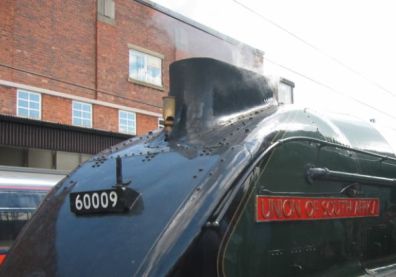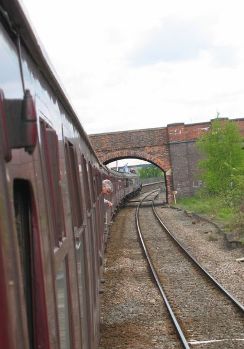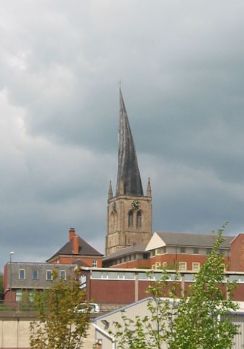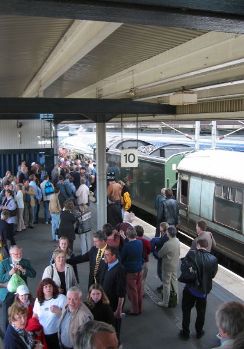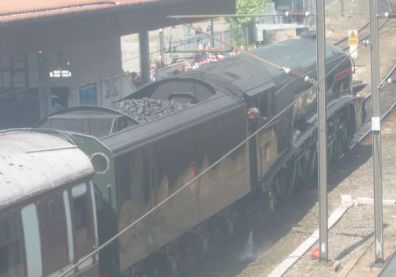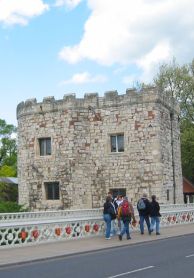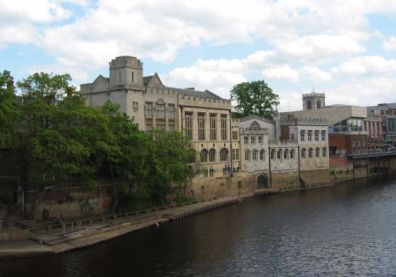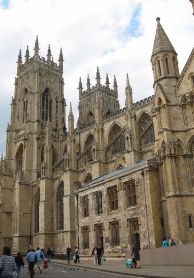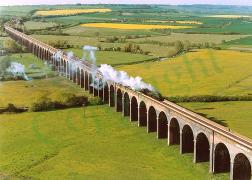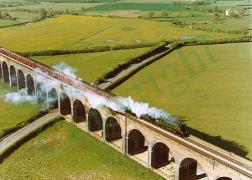|
Chairman's Letter
top
We especially welcome you to 'Steam to York', a Civic Society adventure.
Never before has Kettering Civic Society embarked upon such an ambitious
social event and we thank you all for supporting this unique occasion.
Most towns up and down the country have a Civic Society usually formed to
defend or protect buildings and the spaces between them. Our Society
essentially tried to defend and save older buildings in Kettering town
centre, which were to be demolished to make way for a new shopping centre.
Regrettably it is only retrospectively in the hearts of older Kettering
people that they now acknowledge building losses, which were the reason
for our campaigning and contained a lot of the town's history. I can tell
you this because it is valuable to be able to contrast losses and
successes.
Earlier in this newsletter you will have read something of
Kettering Station and its refurbishment. The station is important for two
reasons. Firstly bringing the railway to Kettering brought about the towns
commercial success at that time, much as the A14 is doing now and
secondly, its Architecture, which you must understand, related to a small
market town in its day and which has a certain industrial splendour. It is
the successful relationship between the Civic Society aiming to have as
much of the station as possible saved and restored during the
refurbishment and British Rail and Bernard Caucus, who listened and
responded to our pleas which we see as a triumph for the town. We are of
course mindful this work didn't happen earlier this year but to finally
lay the project to rest in a way which many people relate to seemed a
befitting celebration.
Kettering is a key mainline station today,
nostalgically there are Kettering people who worked on the railway in the
days of steam, those who delight in the magic of steam and a bygone age,
those who travel by train to specific destinations and those who enjoy a
delightful scenic train journey. What better way than to say thank you to
British Rail for listening than to charter a real steam engine with a
pedigree and bring together a diverse range of people. York has been
chosen specifically for many reasons. The route is interesting, the
distance is great enough for one of Staniers special engines to show what
it was capable of, half a century ago; the destination has so many
different attractions to interest our many travellers and of course is an
historic Railway City.
Bringing together so many different travellers with
so many different backgrounds and interests and introducing those of you
who are not members to our Society, we hope that some of you may wish to
become members. Our Society is making a transition from defending the past
to looking to the future. The biggest campaign we are associating
ourselves with is the Milton Keynes expansion study, which is considering
the viability of introducing 169,000 new homes into this area, which spans
from Milton Keynes as far as Corby. The study is one of four equally large
investigations to bring development north of London. What is of concern is
the impact it will have on our Civic Scene. As regional planning and
regional government start to take over our lives, our local culture, which
is the key ingredient to making our Civic Scene needs protecting so that
too isn't demolished with the town centre buildings, which caused the
founding of our Civic Society.
Month by month we try to have a varying
programme of talks and visits with as wide a range of interest as
possible. An ongoing project is the placing of Commemorative Plaques
around the town to form a rail through its history. Ideas for plaque
topics are enthusiastically invited as you are to the plaque discussion
workshop in the autumn. Meanwhile enjoy the day, the pleasure of being on
an historic train and the City of York.
Thank you for your company and
travelling with us.
Paul Ansell
Winner gets a 'Ticket to Ride'
topJosh, 12, was the lucky winner of a free seat on the train trip to York
when he guessed the correct answer in a competition held at Bishop
Stopford School Christmas Fayre. The second prize of the Prize Draw, which
will take place in York today, is a limited edition print by Barry G Price
of our train No. 60009 Union of South Africa standing at the platform on
York Station next to her sister engine No. 60022 Mallard (1960) is a
wonderful coincidence. We wish the winner much pleasure in becoming the
proud owner of this print.
Promoting the Society
Earlier this year the Society purchased a painting, The Garden at Beech
Cottage by Nina Carroll, in memory of founder member Tony Ireson. As we
have no premises (this is a dream) we were pleased to take the opportunity
to exhibit the painting and to sell greetings cards of the painting as
well as books that have been published by local authors.
The competition and prize draw was well supported at Bishop Stopford
Christmas Fayre and people were queuing to be the first to purchase their
tickets for the Steam train trip to York at the Evening Telegraph Spirit
of Christmas Exhibition, held at Wicksteed Park.
Proceeds from sales will contribute towards Commemorative Plaques
forming a Heritage Trail around Kettering and hopefully more projects
Order forms are available and purchases may be made through committee
members, also details can be found on this website.
Kettering Civic Society on the Web
Congratulations are constantly being received on the content and
quality of our web site. We have Roger Payne to thank for the design. The
site has been a useful resource for many and for differing reasons. Over a
period of 3 months the site has received over 300 hits. Thanks also to
Tony Smith of Kettering Evening Telegraph for his excellent research and
articles that he has allowed us to use, they give a colourful insight into
the history of Kettering and it's people. We are using the Internet to
provide a transition from the Civic Society's earlier campaigns to save
older buildings, which occupied most of our time, to the present, and
looking to the future in developing the town's civic pride. The web site
contains the Society's history, which is being updated with extracts from
newsletters and gives information about visits and talks.
Keltering Civic Society would like to thank all for their
support throughout the year including:
The Park Hotel Kettering, Dido Whitehead, www.shirehotel.co.uk
The reprographic department at Bishop Stopford School, www.bishopstopford.com
Gretton Local History Society, www.grettonvilliage.org.uk
Kettering Railway Station,
Kettering Evening Telegraph, www.northantsnews.com
Toby & Jo Clegg - Barton Seagrave Post Office,
Kettering Borough Council Tourist Information Centre,
CTB Print and Design Ltd, ctb.print@virgin.net
St John's Ambulance - Grace Brown, Angela Cannell,
Thornton's Jewellers,
Train Stewards: Steve Barfon, Scott Thomson, Colin Fleiton, John Harvey,
Chris Argent, and Mike Adamar
Tippleston Photography, www.tippleston.com
The Living Landscape Trust,
Wicksteed Park. www.wicksteedpark.co.uk
If you would like to include items for future newsletters please
contact Monica Ozdemir
Top |
All Aboard |
Welland Valley Line |
Photos | Video | Aerial Photos
| Chairman's Letter
| Top |


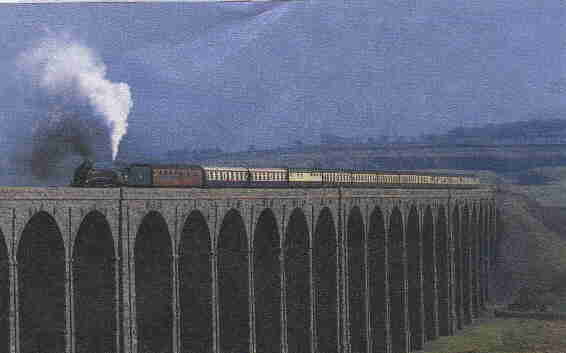
 The Union of South Africa
The Union of South Africa



